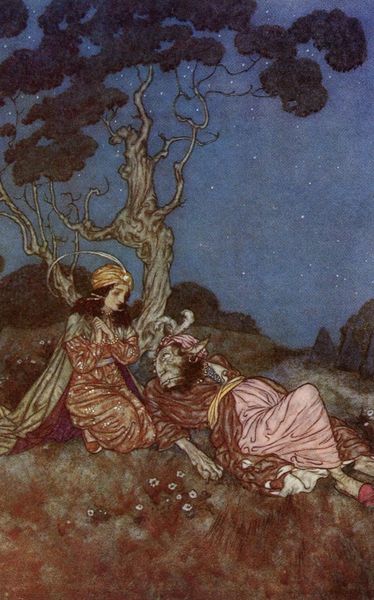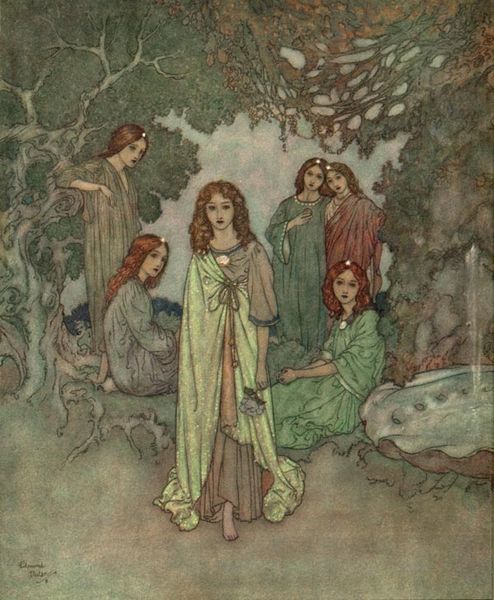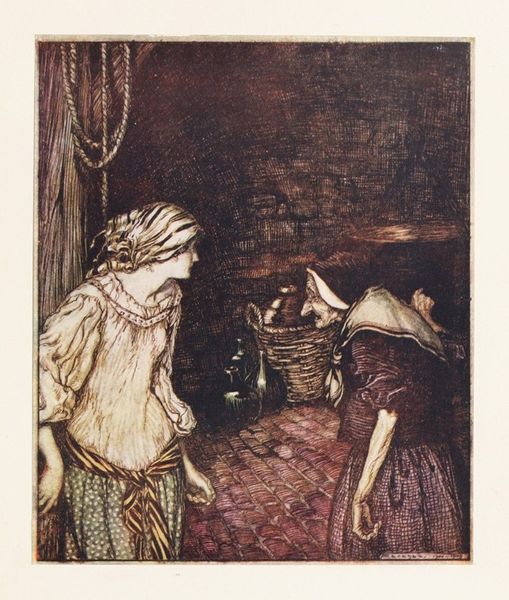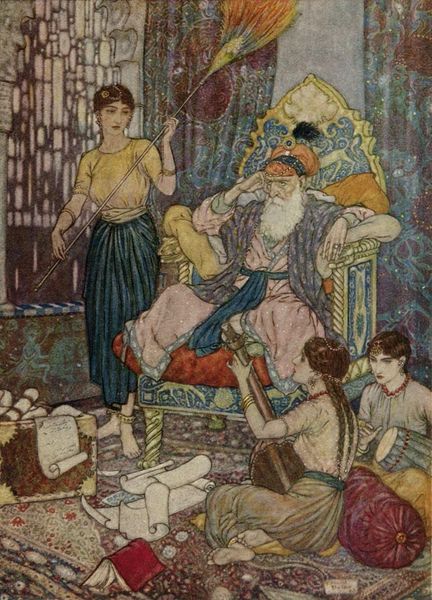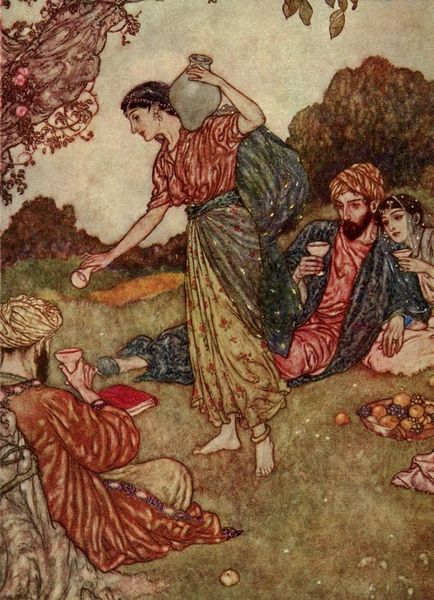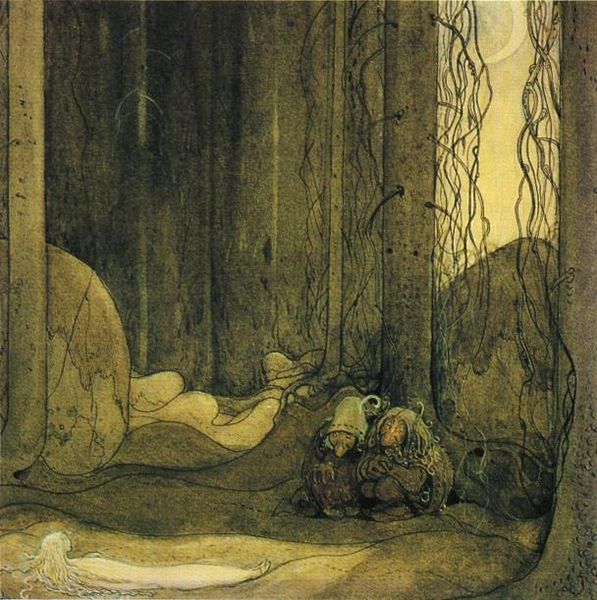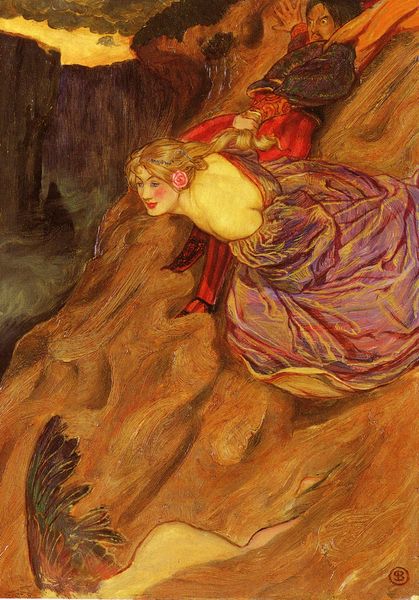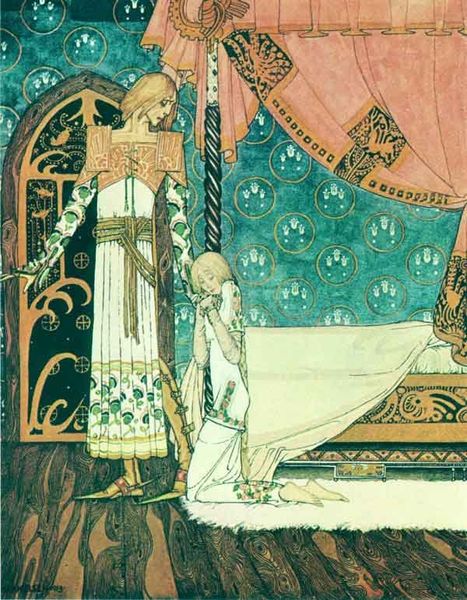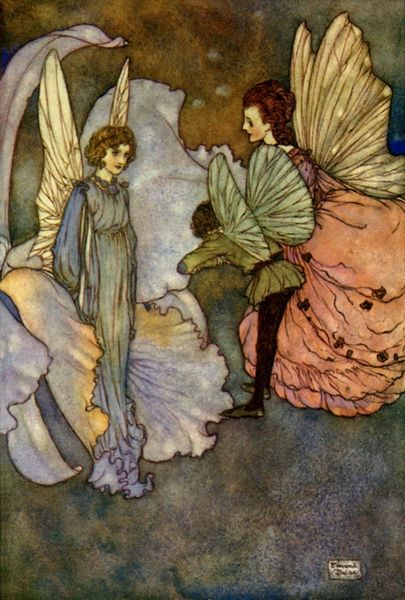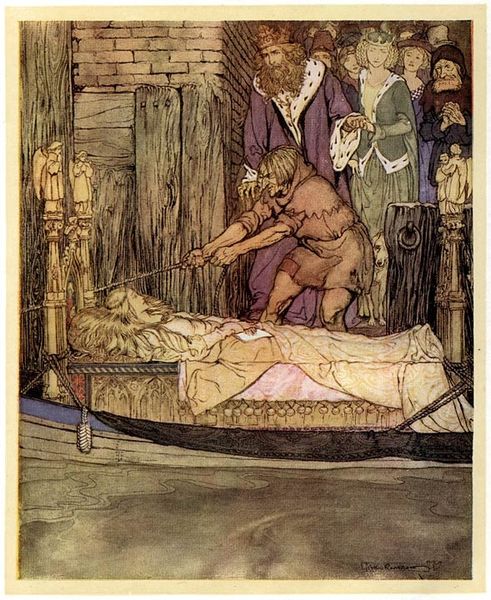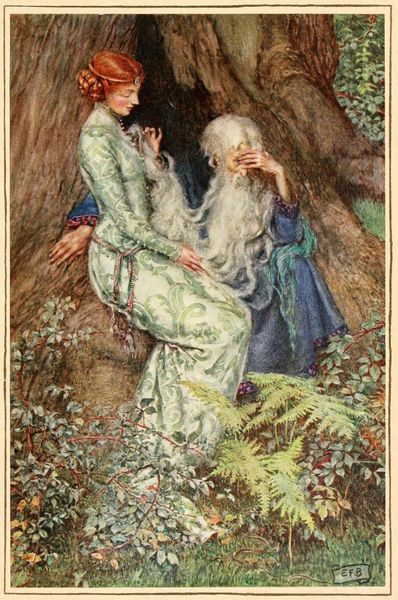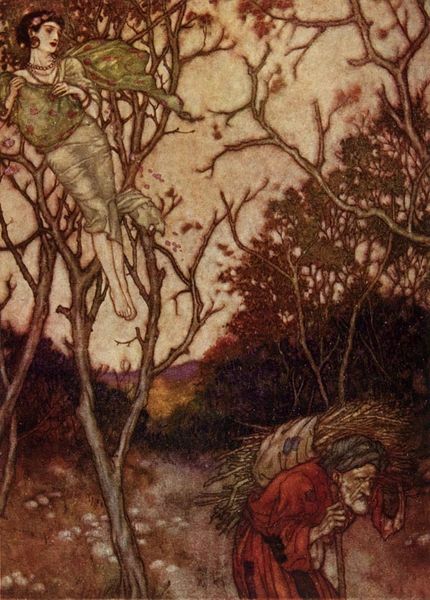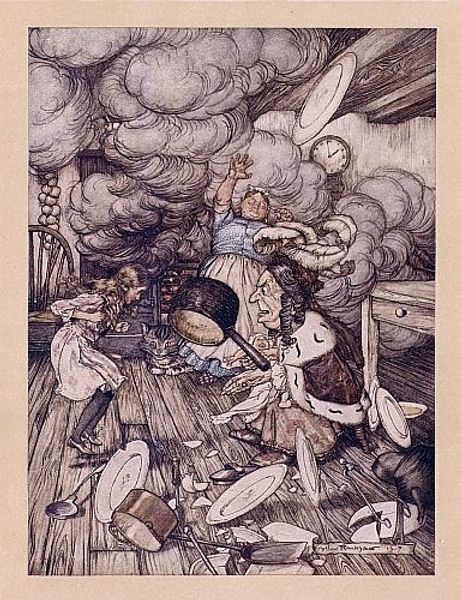
drawing, coloured-pencil, tempera, painting, paper, watercolor, ink
#
portrait
#
drawing
#
fairy-painting
#
coloured-pencil
#
narrative-art
#
tempera
#
painting
#
paper
#
oil painting
#
watercolor
#
ink
#
coloured pencil
#
orientalism
#
symbolism
#
miniature
#
watercolor
Copyright: Edmund Dulac,Fair Use
Curator: This illustration, seemingly titled "The Face of wretched Man," originates from Edmund Dulac's interpretation of "The Rubaiyat of Omar Khayyam." Editor: The muted palette strikes me immediately – earthen reds and browns dominate, giving the scene a somber, almost suffocating air. The limp figure in the foreground heightens that feeling. Curator: Indeed. Consider the materials here – ink, watercolor, tempera, and colored pencil all layered on paper. This layering creates a tangible sense of texture, almost like woven textiles forming a humble shelter, perhaps suggesting the limited resources and labor conditions of the scene's inhabitants. Editor: The way Dulac renders the faces is remarkable. The worry etched onto the older man contrasts with the woman’s serene, almost deathlike stillness. There is a real sense of implied narrative; her stillness perhaps indicates her subjugation. Curator: It also creates a fascinating interplay of symbols, I agree. The drooping figure evokes countless images of tragic heroines throughout art history. What narratives are at play regarding submission? Is it the costuming and the textiles' potential worth? Editor: Absolutely, especially given the source material. Khayyam’s Rubaiyat is all about questioning fate and fleeting beauty. Her inert figure and his grief are potent symbols for these themes. The vessel by her feet too. Is it medicine or poison? Is this her end of life based on natural occurrences or made by the man in the tent? It also carries visual echoes of traditional mourning scenes. Curator: Given that Dulac embraced orientalism and symbolism, one wonders about the artistic license taken in visualising Khayyam's poetry and also, what this piece may have represented at that time. What processes are used and abused? Who is consuming these materials? Editor: The combination of symbolic imagery and what could be exoticized craft definitely yields a disquieting but layered experience for a viewer. Thank you for that lens, that brought so much into a focus for me that I was previously blind to. Curator: And you, to mine. The convergence of materiality and the symbolic meaning really transforms how one perceives art.
Comments
No comments
Be the first to comment and join the conversation on the ultimate creative platform.
